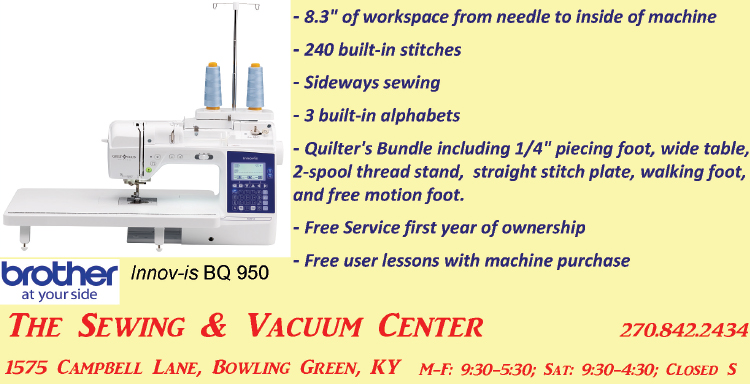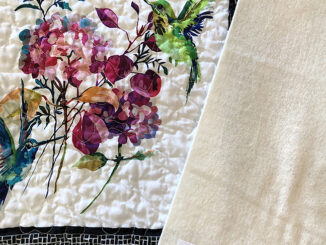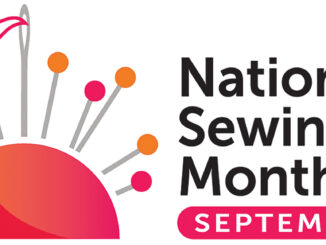
The holidays are approaching and it’s time to think about stitching up some simple projects: Halloween treat bags, wall hangings, Christmas gifts such as small tote bags, quilts, pillowcases, etc. If you haven’t used your sewing machine over the summer, it’s time for some general maintenance to ensure that you have good results with your sewing.
There are several things you can do to ensure good stitching before taking your machine to the technician. We’ll look at several things you can do to improve your machine’s performance.
•Change your needle: One of the easiest steps to take to ensure your machine performs well is to change your needles frequently. This applies to both sewers and embroiderers. Most sewers will not change a needle until one breaks. Needles should be changed after six to eight hours of sewing time unless you are sewing through heavy and/or thick fabrics that may dull the needle faster. Changing your needle prevents skipped stitches and frayed/breaking thread as you sew. Be sure you use the correct needle for your projects. For general sewing, a size 14 universal needle works well. The universal needle is designed to stitch both woven and non-woven fabrics. Sewing machine needles are available in many sizes to work with different fabrics and threads. Your machine will stitch more smoothly when you are using a needle compatible with the threads and fabrics you are using in your project.
•Clean bobbin case area: Check your bobbin case after every couple hours of sewing time and gently brush out any visible lint. Many owner manuals contain directions on how to remove the bobbin case from your machine which will give you a more thorough cleaning. You can also use canned air in addition to the brush for removing lint. Lint build-up can sometimes cause tension issues with the bobbin. Some machine manuals may also show oiling points in the bobbin area.

•Oil designated areas: Check your owner’s manual for the areas you are able to oil, usually the bobbin case area. Be sure to use sewing machine oil as your lubricant. Lubricating the interior of the machine is done by the technician during service.
•Use the correct bobbin for your machine: Bobbins are not always interchangeable between machines. Your owner’s manual will tell you the correct bobbin type to purchase for your machine. Using the wrong bobbin can also cause poor quality stitches. Make sure the bobbin is wound correctly and is inserted correctly. Refer to your owner’s manual for instructions.
•Use a good quality thread in your machine. If you have 25+-year-old thread, it’s time to replace it! Older threads are not formulated for use with newer machines. Hold a length of thread up – a good thread will be smooth, with no thick/thin spots or visible lint.
•Keep your machine covered when not in use. This will prevent dust, lint and pet hair from collecting in your machine. Also, store the machine away from an open window and in a place where temperatures are not extremely cold or hot.
Most sewing machines should be serviced at least once a year by a technician. This ensures your machine receives a thorough cleaning and oiling. The tech will take the machine apart and clear lint from areas you can’t see. He/she will also lubricate areas that are hard to reach. Moving parts will also be looked at for wear. Most technicians will replace the needle as the first part of the service to ensure proper stitching.
Home embroidery machines should be looked at by a technician after every 2 million stitches; the larger, commercial, multi-needle machines should be serviced after 10 million stitches. Check the stitch counter on your machine. (Don’t have a stitch counter? Consider service at least once a year.)
Spending a bit of time to dust and maintain your machine can extend its life and keep stitch quality. At The Sewing and Vacuum Center, we have trained technicians who can thoroughly service your machine to keep it stitching along!
-submitted by The Sewing and Vacuum Center




